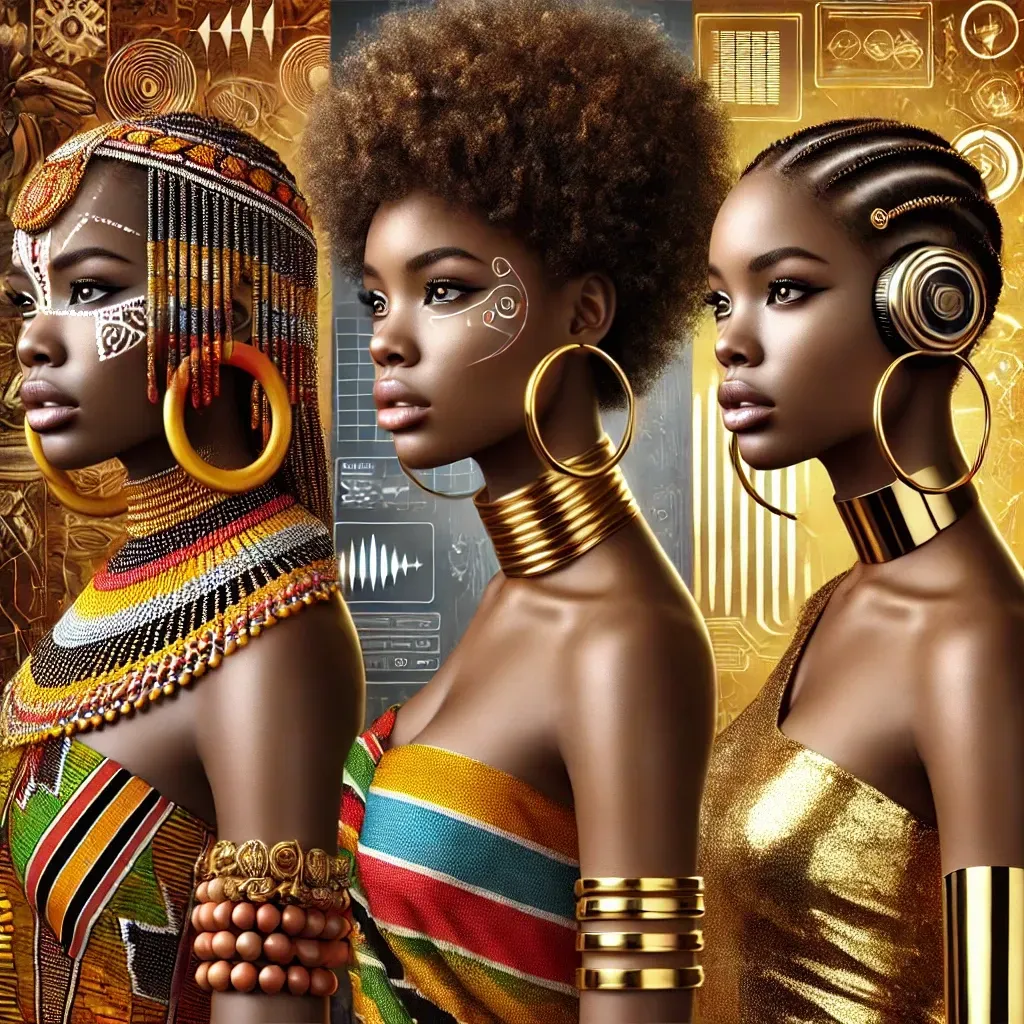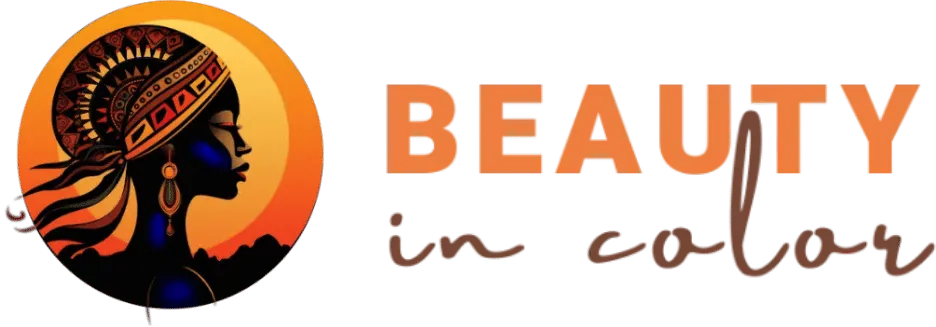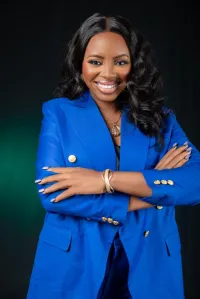MAJESTIC JOURNAL

The Evolution of African Beauty: From Tradition to Futurism 🌍✨
The Evolution of African Beauty Standards: From Past to Futurism
Introduction: Redefining Beauty Through Time
What does beauty mean to you? Is it the glow of healthy skin, the confidence in your posture, or the story behind every accessory you wear? In Africa, beauty has always been more than just physical appearance—it’s a celebration of identity, culture, and power.
Throughout history, African beauty standards have evolved, reflecting the values, traditions, and creativity of diverse communities. From ancient adornments rich with meaning to bold futuristic expressions, the journey of African beauty is both timeless and ever-changing.
At Beauty in Color, we celebrate this evolution by blending history with imagination—embracing the richness of African heritage while pushing the boundaries of what beauty can be.
Traditional African Beauty: A Story Woven in Culture
In many African societies, beauty wasn’t defined by trends—it was a reflection of status, spirituality, and community. Every hairstyle, scarification, piece of jewelry, or fabric told a story of belonging, achievement, or heritage.
✨ Hairstyles as Identity
In ancient Africa, hair was often a symbol of age, tribe, marital status, or wealth. For example:
The Fulani women of West Africa were known for their elaborate braids, decorated with beads and cowrie shells.
The Himba people of Namibia use otjize paste—a mixture of butterfat and red ochre—to cover their hair and skin, symbolizing earth and life.
✨ Body Art and Scarification
Scarification was used in some cultures as a rite of passage or mark of beauty and strength. The intricate patterns were both artistic and deeply personal, symbolizing milestones or societal roles.
✨ Jewelry and Adornments
Adornments like beads, gold, and shells were not just for beauty—they reflected power and spirituality. The Maasai tribe of Kenya and Tanzania, for instance, use colorful beadwork to signify social status and achievements within the community.
✨ Textiles and Colors
African textiles like Kente cloth from Ghana or Adire fabric from Nigeria are rich in symbolism. Colors and patterns represent various meanings—wealth, fertility, spirituality, or royalty.
In these traditions, beauty was a living, breathing language—one that spoke of pride, identity, and belonging.
The Colonial Influence: A Shift in Standards
The arrival of European colonizers in Africa brought not just political change but also cultural disruption. Western beauty ideals—lighter skin, straight hair, and Eurocentric facial features—began to infiltrate African societies.
During this time, many Africans were made to feel that their natural features were "less than." Skin-lightening products became popular in some regions, and straightened hair was often associated with professionalism and acceptance in colonial-influenced societies.
This period left a lasting impact on how beauty was perceived—but it didn’t erase Africa’s deep-rooted pride in its heritage.
The Renaissance of African Beauty: Reclaiming Identity
The late 20th century saw a cultural awakening across Africa. Movements to reclaim African identity and beauty took center stage, encouraging pride in natural hair, dark skin, and traditional attire.
🌿 The Natural Hair Movement
In countries like Nigeria and South Africa, women began embracing their natural hair textures, celebrating afros, braids, and locs as symbols of cultural pride and self-love.
💡 Representation in Media
African beauty queens, models, and actresses began breaking barriers on global stages. Icons like Lupita Nyong’o, Adut Akech, and Aisha Adebayo became symbols of elegance, grace, and unapologetic African beauty.
🎨 Artistic Revival
Artists, photographers, and fashion designers are blending traditional elements with modern creativity, reshaping how African beauty is presented on the global stage. This is what we at Beauty in Color aim to achieve for every client that walks through our doors.
African Futurism: Reimagining Beauty Beyond Boundaries
Enter African Futurism—a movement that blends African heritage with futuristic visions of technology, fashion, and storytelling. It’s not just about looking back at history but imagining bold, new futures for African beauty.
🔮 What Does African Futuristic Beauty Look Like?
Metallic fabrics that shimmer like stardust, combined with traditional beadwork.
Bold geometric patterns inspired by ancient symbols, merged with modern silhouettes.
Hairstyles that defy gravity, reflecting both cultural roots and futuristic fantasy.
Think of films like Black Panther, where Wakanda’s characters embody a perfect fusion of tradition and innovation. This is where the future of African beauty thrives—at the crossroads of heritage and imagination.
Why This Evolution Matters
The journey of African beauty is more than skin-deep. It’s about:
🌍 Reclaiming Identity: Embracing natural beauty and cultural traditions after centuries of colonial influence.
🌟 Celebrating Diversity: Acknowledging that African beauty is not one thing—it’s a rich, diverse expression that varies across regions, tribes, and individuals.
🚀 Inspiring the Future: Using creativity and technology to envision beauty without limits, where African features, traditions, and innovation shine on the global stage.
At Beauty in Color, this evolution inspires everything we do. Our photoshoots aren’t just about capturing pretty images—they’re about telling stories of empowerment, history, and futuristic imagination.
Conclusion: Beauty Beyond Time
African beauty isn’t static—it’s a living, evolving story of power, creativity, and resilience. From the traditional beadwork of ancient tribes to the bold visions of African futurism, every element reflects a deep pride in heritage and an unstoppable drive toward the future.
When you embrace African beauty in all its forms, you’re not just looking in a mirror—you’re seeing the past, present, and future all at once.
At Beauty in Color, we believe every woman deserves to feel like her most powerful self—rooted in history, thriving in the present, and boldly stepping into the future.

contact@beautyincolor.net
@ Copyright 2025 - Majestic Sessions LLC | All rights reserved

